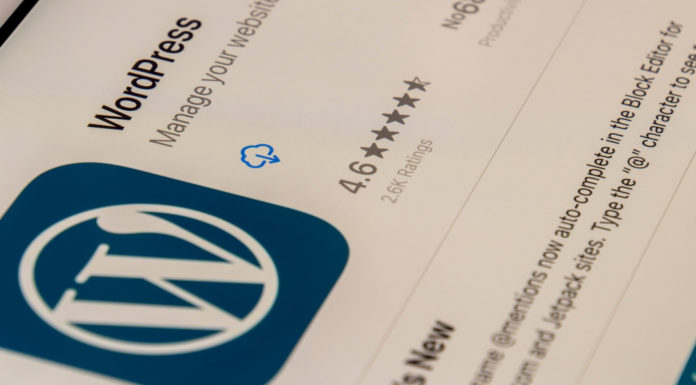Introduction:
Design is a crucial part of any successful business. From logos to marketing images, it’s important to consider every element you use and where you use them. Graphics, buttons, banners, and pop-up windows all play a role in creating a positive user experience. If you want to make a great first impression on potential customers, a professionally designed website is the key.
Not only will it help you generate leads and boost conversions, but it will also make it easy for visitors to navigate your site. As a Shopify store owner, you’ve made an excellent choice. The platform is reliable, easy to use, and has a responsive design that ensures your products will look great on any device.
But remember, 80% of customers say that their shopping experience is just as important as the products and services you offer. Shopify’s themes are already clean and intuitive, providing a great user experience. However, there are always ways to further optimize your store to improve UX, functionality, and overall impressions.
Create your first impression:
The impression that people form of your business when they visit your website is crucial. Therefore, it’s important to ensure that you make a positive impact on your audience within the first few seconds. If your website is outdated or unappealing, visitors will immediately form a negative opinion of your business.
As a result, they won’t stay on your page, which means that you’ll miss out on potential leads. That’s why web design is so essential. It influences how your audience perceives your brand, and the first impression that you provide them with will determine whether they choose to stay on your page to learn more about your company or click on a competitor’s page instead. Effective web design can keep leads on your page for longer periods, which is especially important for Shopify store owners.
Although the platform is already reliable and easy to use, optimizing your store for UX and functionality can further improve the impressions and conversions that you receive. Therefore, it’s crucial to carefully consider every element that you use and where you use it, from logos to pop-up windows, to create a positive user experience.
Strategize your SEO:

Your website’s success depends on how well you employ web design techniques for publishing your material. Ignoring this crucial aspect will lead to poor search engine indexing, hindering your exposure. Even design elements have an impact on your SEO, and failing to comprehend this can be daunting. In essence, your code must be SEO-friendly to avoid complications.
Color Scheme:
The process of selecting the appropriate colors for your brand is of utmost importance, as they not only establish the visual appearance of your brand but also convey the emotions and sentiments you want people to relate with. It is crucial to choose colors that set you apart from your competitors to avoid any confusion among your potential customers.
While color psychology is not an exact science, it can certainly provide valuable insights and inform your choices, particularly when it comes to the color of your brand logo.
Choose your Font:

Selecting the appropriate fonts for your website is a critical aspect of building your brand. It’s best to keep it straightforward and opt for no more than two fonts, one for headings and one for body text, to prevent confusion among your visitors.
You can explore a vast range of fonts that complement each other and create a cohesive look on Fontpair. Remember that your font selection should align with your brand’s overall style and messaging so that it can make an impact.
Promote Consistency:
Establishing your brand is vital for attracting new leads to your company. Your audience needs to be familiar with your brand, so they choose you when they’re ready to convert. Consistent web design is key to providing uniformity throughout your page. If your website is inconsistent, visitors may leave for a more professional-looking site.
By maintaining consistency, you can keep leads on your page longer and familiarize them with your company. Rebuilding your site with this crucial element in mind will eventually generate more leads and conversions.
Create Brand Awareness:

Ensuring your brand’s consistency across all aspects of your business is crucial. This creates a seamless brand story that embodies your business’s identity and purpose. By having a clear mission and purpose, customers can align their values with your business, and displaying this information on your website’s About Us page can reassure customers that your company is legitimate. Sharing your brand story instills trust in your customers and attracts more leads to your business.
Keep an Easy Browse and Buy Process:
Ensuring your online store is user-friendly is crucial to optimizing customer satisfaction and sales. Assessing the ease with which customers can navigate from product information to purchase is a key indicator of your store’s usability.
The more straightforward the process, the more likely customers are to complete desired tasks, such as reviewing product details, comparing prices, and making a purchase. By providing a seamless shopping experience, your customers will appreciate the convenience and be more inclined to return to your store in the future.
E-commerce Store Navigation UX:

To ensure a positive eCommerce experience for your customers, it is crucial to make the process of finding products as effortless as possible. One effective way to achieve this is by implementing clear menus and filters that enable users to easily locate desired items. For instance, if you specialize in selling sweaters, dividing them into groups based on department and offering a variety of categories such as styles, brands, and colors will enable customers to navigate your page with ease.
This will enable them to effortlessly browse through your inventory to find exactly what they’re looking for, such as a medium-sized red cable knit sweater. Once they have found the product they desire, it’s important to provide them with detailed descriptions and photographs, as well as an “Add To Cart” button, to enable them to purchase with ease. By creating a user-friendly eCommerce page, you can effectively enhance customer satisfaction and loyalty.
Intuitive Designs for Mobile Versions:
For eCommerce owners, it’s important to optimize the website for mobile devices to ensure the best possible experience for customers. With over half of retail sales coming from smartphones this year, it’s clear that mobile optimization is more important than ever. The mobile landscape is constantly evolving, and new devices like the Galaxy Z Fold offer larger screens and unique form factors.
To ensure accessibility to all customers, regardless of the device used, it’s important to work with a developer familiar with optimizing for a variety of devices, including flip phones and standard smartphones. By taking the time to ensure website mobile-friendliness, a seamless shopping experience can be provided to customers, regardless of the device used.
Verdict:
When it comes to creating a great Shopify store design, there’s no one-size-fits-all approach. The best practices will depend on your target customer group and the latest trends in design. By staying up-to-date with the latest trends and understanding your customers’ needs and preferences, you can create a Shopify store design that is both visually appealing and user-friendly.
Whether you’re optimizing for mobile devices or desktop computers, it’s important to work with a developer who understands the latest design principles and can help you create a store that meets your customers’ needs. With the right approach and a focus on your customers, you can create a Shopify store that stands out from the competition and drives maximum sales for your business.




































